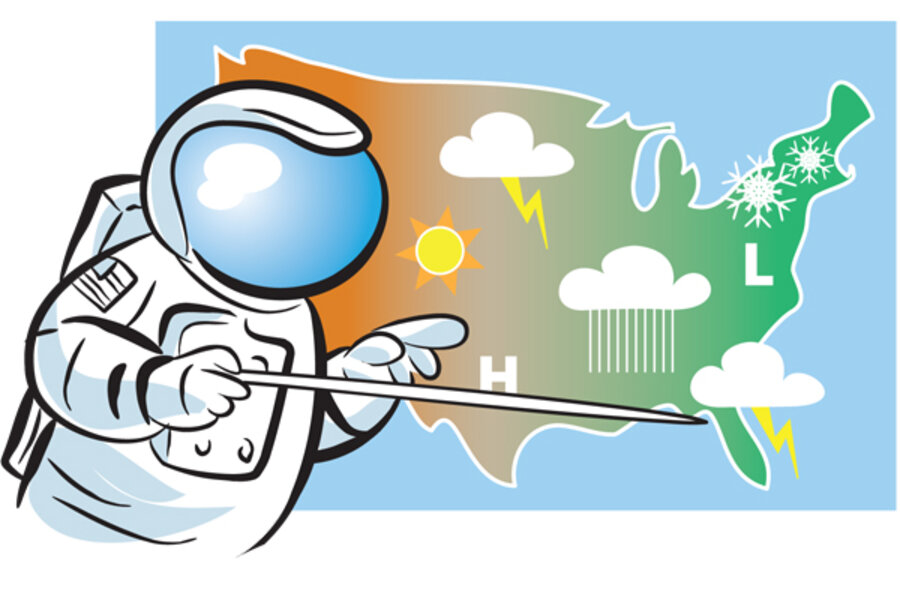Why NASA picked stormy Florida
Loading...
If the space shuttle Endeavour lifts off in the early hours of Feb. 7, it will be the first shuttle launch in more than half a year to leave on time.
Each of the last three missions has been delayed for days or weeks – with one held back by a scheduling conflict and two by stormy weather. Despite its "Sunshine State" moniker, Florida has postponed shuttles due to five hurricanes, two hailstorms, a tropical storm, lightning damage, countless cloudy days, and meddlesome woodpeckers stabbing a fuel tank. And if the temperature goes below 36 degrees F., as it did earlier this month, Cape Canaveral's fickle weather will thwart yet another scheduled blastoff.
So why did the National Aeronautics and Space Administration choose Florida as the nation's launchpad? It's all about the state's location, explains Fred Marschak, an astronomy professor at Santa Barbara City College in California.
From the beginning, NASA needed beachfront property. Early rockets dropped debris, shed spent booster packs, and sometimes exploded. Better to have these scraps and missteps plummet into the ocean than onto American towns.
Plus, blasting off over the Atlantic has an added bonus. "Our Earth rotates eastward," Mr. Marschak says. When space shuttles launch in the same direction, "the Earth gives us a push." This planetary effect is similar to why it's easier to swim with the water's current rather than against it.
NASA also wanted a southern state because the rotational push is strongest along the equator. The European Space Agency, for example, launches many of its spacecraft from French Guiana, along the northeastern coast of South America. Russia, on the other hand, blasts off from Baikonur, with a latitude north of Bangor, Maine. Its space program compensates by "building much bigger rockets," says Marschak.
The US could have set up shop in Hawaii or Puerto Rico, which are closer to the equator. But Cape Canaveral was less remote while still coming with plenty of empty land.
As for the weather, "rain and hurricanes are very detrimental to all kinds of electronic devices, but, really, most parts of the country deal with stormy weather," Marschak says.
A 2007 report from the Associated Press found that NASA needed to delay space shuttle flights 60 percent of the time. Dark skies led to about a third of the delays, although lightning, wind, and rain caused some of the technical problems that held up half of postponed flights. For example, NASA pushed back Endeavour's last outing to test the shuttle's equipment after an errant lightning bolt.
Tight timetables exacerbate the weather's effects. Even if clouds will clear an hour after a scheduled launch, NASA may scrub the mission for an entire day. The International Space Station, where most shuttles head these days, only allows for a 10 minute launch window before the base spins around the globe and out of reach. Miss those 10 minutes, and you're stuck for the rest of the day.





